Leonids Meteor Picture
by Mike Hankey, under Comets & Meteors
I setup for the Leonids meteor shower last night and was able to capture a picture of one of the meteors. I focused my camera on Procyon thinking it would be a good spot to catch something. I set the camera to shoot repeatedly and waited. As I waited I stared at Procyon, after a few minutes just like that a bright meteor flew out of the sky, its starting place looked to be exactly at Procyon. I waited for the exposure to finish and then eagerly checked the small camera screen, but I didn’t see anything! I was very upset. I started looking at my camera settings and noticed my focal ratio was way to high — f/5. I dropped it down to f/3 (as low as it can go) and continued to shoot the rest of the night with no results.
This morning I was reviewing my pictures on the computer and I saw my Procyon meteor in all its glory. I was so happy! The streak left by the meteor was too faint to see on the camera screen, but I could clearly see it on the computer. I have ordered a new camera lens that has a f/1.4 ratio which should be much better for future meteor shower pictures.
This is my first ever intentional meteor photo. Not as exciting as the last one, but still pretty good for an amateur like me.
For reference purposes: I was using a Canon 20D, piggy back mounted on my telescope with ISO 800, f/5 focal ratio and a 60 second exposure.
UPDATE: Robert Lundsford from the American Meteor Society let me know that because of the location of the tail on this meteor, it is considered a sporadic meteor and not a Leonid. I plotted the picture in a star chart to understand what he was saying and I now see what he means. To be a meteor associated with a shower, the meteor has to radiate from a specific central point, in this case Leo. I’m curious to know if sporadic meteor rates increase during a shower though, meaning was this meteor caused from the same dust field that creates the shower, or something totally unrelated.
Here is the star chart plot of the picture. Click to enlarge.
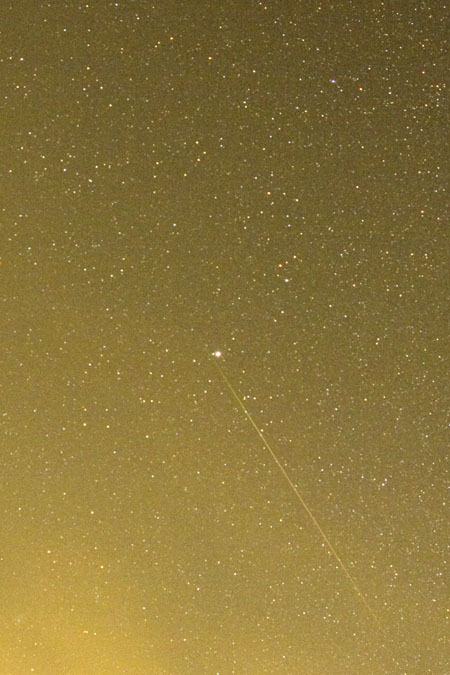
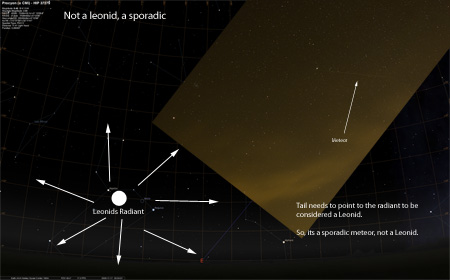
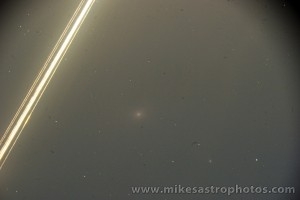
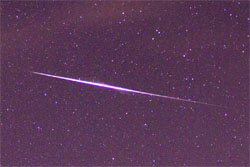
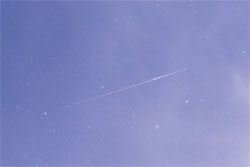
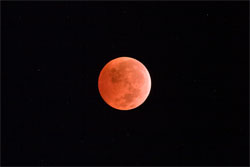
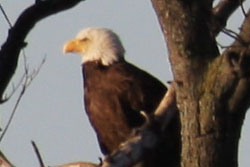

November 17th, 2009 on 1:18 pm
Cool! It looks like it changes color as it streaks through the atmosphere. Is that for real?
November 18th, 2009 on 8:02 am
I’ve always wondered what percentage of meteors don’t hit Earth directly but instead go into a temporary orbit before hitting Earth’s atmosphere. In such a case they wouldn’t appear to originate from the radiant but would come in from a variety of angles. If sporadic meteors increase during regular meteor storms that would provide a clue to my question, you think?